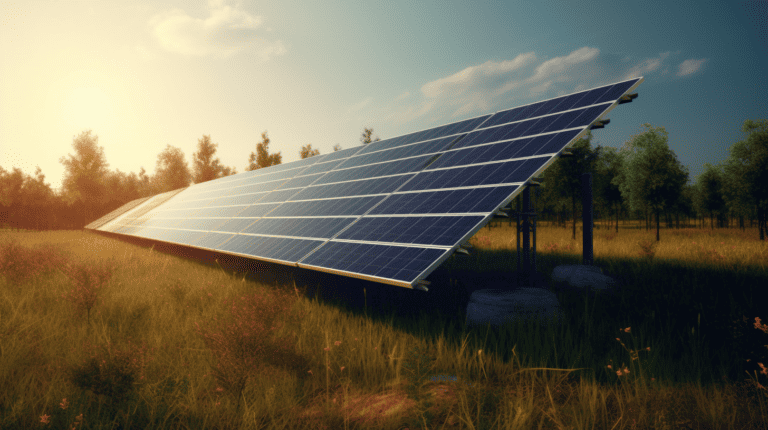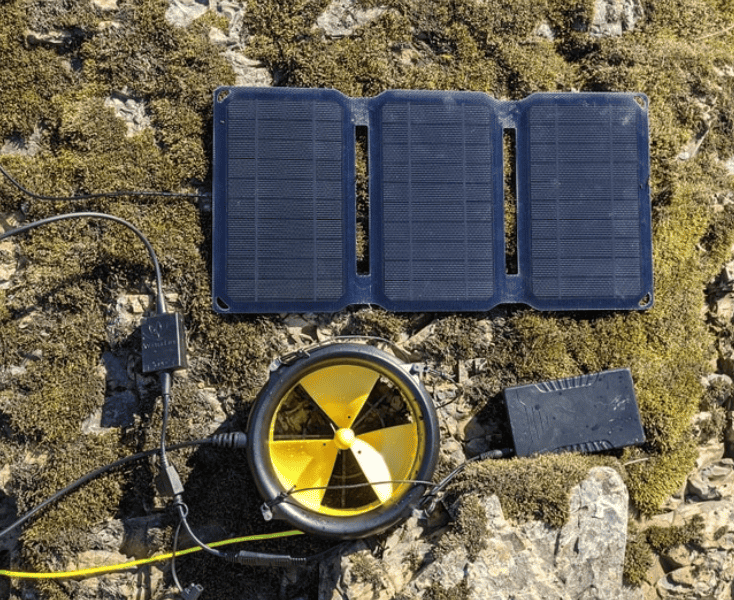How to Make Energy Systems Earth-Friendly: 10 Proven Strategies
Embrace Sustainability: Ways to Make Energy Systems Earth-Friendly
I recently picked up a copy of “How to Make Energy Systems Earth-Friendly: 10 Proven Strategies,” and I must say, it’s been an enlightening read. As someone who’s always been interested in sustainable living, I found this book to be an invaluable resource.

The author doesn’t just skim the surface but delves deep into the subject, providing a comprehensive guide on transforming our energy systems to be more environmentally friendly. The ten strategies outlined are proven, practical, and achievable, making it an accessible read for experts and beginners.
I particularly enjoyed the author’s ability to simplify complex concepts without losing their essence. Whether harnessing solar power and wind energy or exploring less conventional sources like geothermal, the book explains each strategy clearly and precisely.
Furthermore, the book is not just about theory. It’s packed with real-life examples and case studies illustrating how these strategies have been successfully implemented worldwide. This is what sets it apart from other books on the subject. It’s not just telling you what to do – it’s showing you how it’s done.
One of my favorite sections was on energy efficiency. The author provides practical tips on reducing energy consumption in our daily lives – from simple changes like switching to LED lights to more significant modifications like improving insulation in our homes.
In a world where climate change is a pressing issue, “How to Make Energy Systems Earth-Friendly” is a must-read. It empowers us with the knowledge to make a difference, and I believe that’s the first step towards creating a sustainable future. I highly recommend this book to anyone interested in positively impacting our planet.
Understanding Different Renewable Energy Sources
Solar Power Potential
Have you noticed how hot your green technology vehicle gets when you park in the sun? That’s solar energy and bioenergy at work! These renewable energy sources harness the sun’s power to generate electricity, similar to hydropower. The process involves solar panels, often installed on rooftops, capturing sunlight and converting it into vehicle energy.
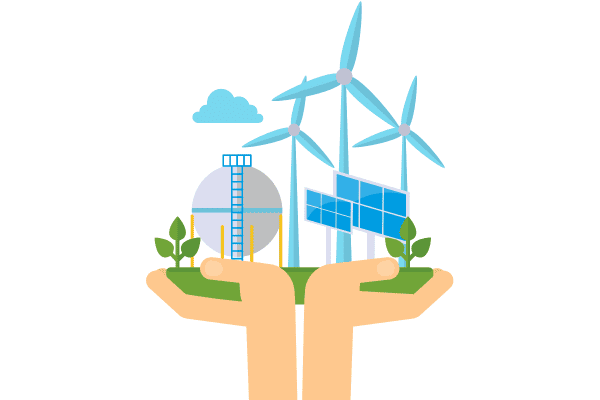
- Benefits: Solar power is abundant, reduces reliance on fossil fuels, and lowers greenhouse gas emissions.
- Drawbacks: Cloudy weather can limit efficiency, and there is a high initial cost for installation.
Wind Energy Efficiency
You know that cool breeze you feel on a windy day? Imagine harnessing that to power your home! Wind turbines, a form of green technology, capture wind energy and convert it into electricity. Like hydropower facilities and bioenergy plants, these towering structures can be found in rural and offshore areas. Like thermal energy systems, they’re part of our renewable energy solutions.

- Benefits: Wind is a clean source of power with no harmful byproducts.
- Drawbacks: Turbines can be noisy and threaten wildlife like birds.
Reliable Hydropower
Remember when you were a kid playing with water wheels in the stream? That’s hydropower in its simplest form! Today, massive dams control water flow to generate electricity – one of our oldest renewable resources. Just like solar energy, it’s a form of sustainable energy. With advances in energy storage, we can better control our energy use.
- Benefits: Hydropower plants have long lifespans and provide stable output.
- Drawbacks: Constructing dams can disrupt local ecosystems and displace people.
Geothermal Energy Sustainability
Ever soaked in a hot spring or utilized solar power? You’ve experienced renewable energy! Like nuclear power plants, this resource taps into Earth’s internal heat or the sun’s rays to create steam or electricity. Like power plants using natural gas, these systems drive turbines to produce electricity.

- Benefits: Geothermal plants emit fewer greenhouse gases than fossil fuel plants.
- Drawbacks: High setup costs limit widespread use, and locations are geographically limited.
So there you have it: four different renewable sources, including nuclear power, each with pros and cons. But one thing they all share? They’re kinder to Mother Earth than traditional energy sources like coal and natural gas. Still, the pursuit of a sustainable future continues.
Role of Green Technology in Energy Systems
Impact on Emissions
Green technology, often called ‘green tech,’ is crucial in reducing greenhouse gas emissions caused by traditional fuel and coal energy systems. These systems spew out tons of these harmful gases every year. Green tech offers a cleaner, more efficient, stainable alternative that contributes positively to the climate.
Take solar power, for instance. This sustainable energy source harnesses the sun’s energy and converts it into electricity with zero emissions, unlike coal or gas fuel. Wind turbines do the same thing with wind energy. According to a report by the International Renewable Energy Agency (IRENA), renewable energy sources like these could reduce CO2 emissions by up to 70% by 2050, offering a more sustainable alternative to coal and gas fuels.
Boosting Energy Efficiency
Green tech isn’t just about reducing gas; isn’t it about other fuels? It’s also about making our energy system more sustainable and efficient. How? By minimizing waste and maximizing the output of these fuel sources.
Consider LED lighting technology—a perfect example of green tech improving efficiency and reducing gas emissions. LEDs use significantly less electricity than traditional incandescent bulbs, acting as a sustainable alternative to gas fuel. They last much longer, reducing both costs and waste.
Similarly, intelligent grids—networks that use digital technology to monitor and manage electricity demand—can drastically improve the efficiency of power distribution from coal and gas fuel sources while reducing blackouts, surges, and emissions.
Promoting Sustainable Development
Sustainability, a key benefit of green tech, is a viable alternative to finite gas and coal resources. Unlike these emissions-heavy fossil fuels, sustainable sources like wind and solar are virtually limitless.
Moreover, green tech can drive sustainable development in other ways, such as reducing emissions and fuel consumption, positively impacting the climate, and lessening gas usage.
- Creating sustainable jobs: The renewable fuel industry, focused on reducing emissions, already employs millions worldwide, contributing to the climate solution.
- Reducing health risks: Lower emissions mean fewer respiratory diseases.
- Protecting ecosystems: Less pollution helps preserve biodiversity.
In short, sustainable green tech can help us meet today’s fuel and gas needs with today’s promising future generations’ ability to meet theirs, all while addressing climate concerns.
Breaking Free from Fossil Fuels
Finally, let’s discuss how green tech, blessing sustainable and nuclear energy, solves our dependency on fossil fuels like gas. These resources have powered our world for centuries but at a high cost – environmental degradation from emissions and geopolitical tensions over oil reserves being just two examples.

Renewable and sustainable energy technologies, like solar panels, offer us a gas and fuel-free way out of the emissions bind. These panels don’t need drilling rigs or pip don; they harness sunlight—a resource accessible regardless of geographic location or political boundaries.
Adopting Solar and Wind Power
Solar Panels: A Cost-Effective Solution
Solar power, a sustainable choice, is gaining popularity among homeowners aiming to reduce their emissions. It’s like having your coal. It’s a plant without pollution! The cost-effectiveness of solar panels is undeniable, even compared to nuclear options. While the initial investment can be high, the long-term savings on electricity bills make it a worthwhile venture.
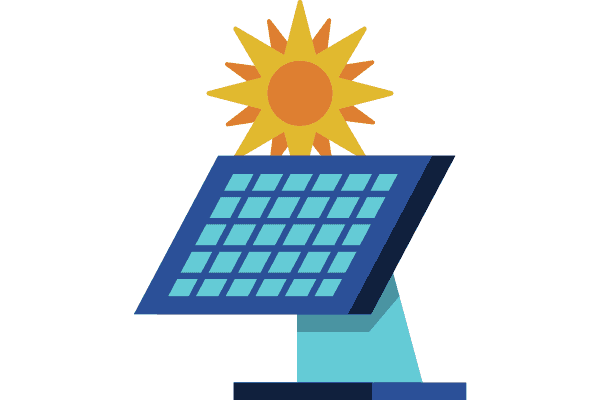
Consider this: a typical sustainable home solar panel system can generate around 3,000 kWh of electricity annually, significantly reducing gas emissions. That’s enough to power a tiny hThat’sPlus. With technological advancements, solar panels are more efficient at harnessing the sun’s energy.
Wind Turbines: Powering Large-Scale Operations
As a sustainable energy source, wind power is often used for large-scale electricity like nuclear and gas. Just think about it – giant wind turbines spinning in unison, similar to nuclear reactors and gas turbines, capturing and converting wind energy into electricity with lower emissions. They’re like massive fans that cool us down but don’t up our homes more sustainably!

A single wind turbine can generate enough electricity to power hundreds of homes. And unlike traditional power plants that burn gas or rely on nuclear power, wind turbines produce zero emissions during operation, making them a more sustainable choice.
Solar vs. Wind Power: Efficiency Showdown
There’s no clear winner when there are efficiencies between solar, wind, and nuclear power systems. Each has its strengths and weaknesses regarding sustainable energy production and gas emissions.
Solar panels are a sustainable option for areas with plenty of sunlight throughout the year but may lose efficiency, increasing emissions during cloudy days or at night. Wind turbines, an alternative to gas, can operate day and night as long as there’s sufficient wind speed, be there face downtime during calm weather conditions.
Both sources contribute significantly to sustainable global electricity production but still lag behind conventional methods like coal or hydropower due to their intermittent nature and emissions.
Installation Processes
Installing solar panels, a sustainable solution, involves mounting them onto rooftops or ground-based racks angled towards the sun. This process, which reduces emissions, usually takes a few days, depending on the installation size.
Wind turbine installation, a sustainable energy source, is a bit more complex due to its size and requires specialized equipment for assembly and placement. The location must also be carefully selected based on local wind patterns to maximize output and minimize emissions.
Heat Pumps and Energy Efficiency
The Role of Heat Pumps
In the realm of sustainable energy efficiency, heat pumps play a crucial role in reducing emissions. These devices move heat from one place to another, making them essential in heating buildings in an eco-friendly manner. They extract thermal energy from the outside air or ground and transfer it indoors, significantly lowering emissions. This process can be reversed for cooling purposes during warmer months, contributing to a more sustainable environment.
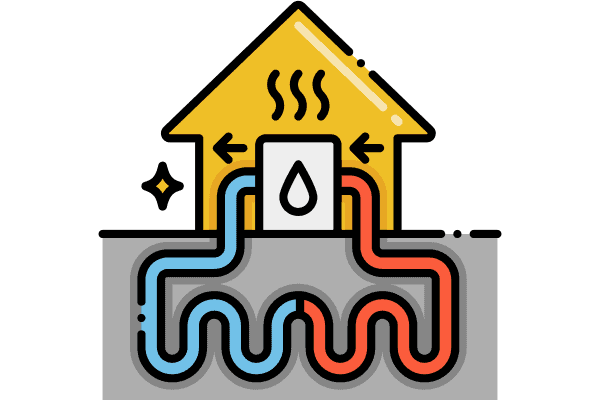
Heat pumps are not just about heating your home or office sustainably; they can also be used for domestic hot water production and reducing emissions, including powering your eco-friendly washing machine. It’s like having a sustainable It’sr station in your backyard!
The beauty of these sustainable systems lies in their ability to produce more energy than they consume, reducing emissions significantly. For every unit of electricity used, up to three heat units can be generated.
Cost Savings with Heat Pumps
Switching to sustainable heat pumps doesn’t just reduce emissions and doesn’t fit the environment; it’s also kinder on your walletit’sHeat pumps offer significant cost savings compared to traditional heating methods, such as gas or electric heaters.
- Reduced energy bills: With their high efficiency and sustainable features, heat pumps lower your monthly utility bills and emissions.
- Lower emissions and sustainable maintenance costs: These systems require less upkeep than conventional heaters.
- Long lifespan: With lower emissions, sustainable heat pumps typically last longer than other heating systems.
These sustainable savings make the initial investment worthwhile in the long run, reducing emissions.
Environmental Benefits
Heat pumps don’t just save you money; they don’t also good for our planet by reducing emissions. Here’s why.
- Lower carbon footprint here since they utilize renewable sources (air or ground); these systems emit fewer greenhouse gases, effectively reducing emissions.
- Energy-efficient: They consume less electricity and produce fewer emissions than traditional heating methods.
This makes them a key player in creating an earth-friendly energy system, reducing emissions.
Advancements in Technology
Like all technology, heat pump tech continuously evolves for better performance, efficiency, and lower emissions.
- Enhanced features for user control and comfort
- Improved designs for quieter operation
- Advanced compressors and refrigerants for greater efficiency
These advancements ensure that heat pumps remain viable for an eco-friendly future.
Remember, going green isn’t just about saving money—it isn’t about preserving our planet! And with technologies like heat pumps at our disposal, achieving this goal seems more possible than ever!
Government’s Influence on Renew Policies
Government Incentives and Renewable Adoption
Government policies play a crucial role in promoting renewable energy adoption. Various incentives, such as tax credits, grants, and subsidies, have been implemented to encourage using renewable sources. For instance, the U.S. Federal Investment Tax Credit (ITC) offers a 30% tax credit for solar systems on residential and commercial properties.
However, not all rainbows and unicorns. These incentives often face criticism for being too generous or ineffective. Some argue that they distort market dynamics, favoring certain technologies over others.
Fossil Fuel Policies
On the flip side, policies also exist that discourage fossil fuel use. Carbon pricing mechanisms like carbon taxes or cap-and-trade systems are standard tools governments use to make fossil fuels less attractive economically.
Yet these measures can be controversial due to their impact on industries and consumers. The fossil fuel industry often argues that such policies unfairly disadvantage them and lead to job losses.
Evaluating Current Regulations
The effectiveness of current renewable energy regulations is a hot topic among policy wonks. Some countries have seen great success with their policies, while others struggle to meet their targets.
For example, Germany has been hailed as a leader in renewable energy thanks to its Energiewende policy which aims for 80% of electricity to come from renewables by 2050. However, other countries like Australia have faced criticism for their lackluster efforts in promoting renewables.
Future Policy Changes
Looking ahead, several changes could boost renewable uptake:
- More robust carbon pricing: Making fossil fuels more expensive would make renewables more competitive.
- More R&D funding: Boosting research into new technologies could unlock cheaper and more efficient renewable energy generation methods.
- Grid improvements: Upgrading power grids could accommodate more renewable energy sources.
- Public awareness campaigns: Educating the public about the benefits of renewables could increase demand.
Lifestyle Changes Towards Sustainability
Reducing Carbon Footprint
The journey toward sustainable development begins at home. There are countless ways to reduce carbon footprint, marking a small yet significant step in climate change mitigation. For instance:
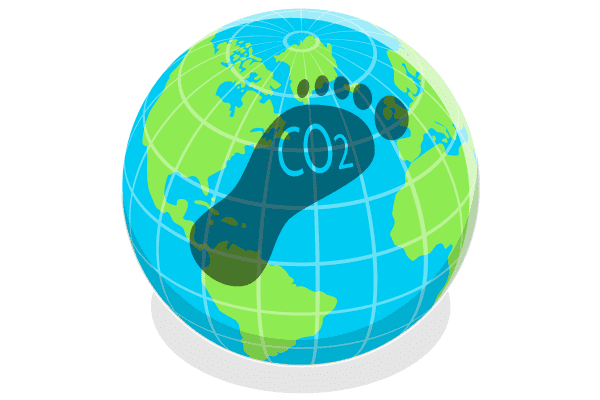
- Switch off and unplug: Many devices consume energy even when not used. Make it a habit to switch off lights, fans, and other appliances when leaving a room.
- Use energy-efficient appliances: Opt for LED bulbs and Energy Star-rated appliances that conserve energy.
- Consume less meat: The environmental impacts of meat consumption are staggering. Reducing meat intake can significantly lessen your contribution to greenhouse gas emissions.
Adopting Eco-friendly Habits
Eco-friendly habits like recycling and composting are essential in limiting waste generation. It’s not just about tossing papIt’snto the recycle bin or creating a compost pile with kitchen scraps.
- Start with segregation: Separate your waste into biodegradable, non-biodegradable, and recyclable categories.
- Reuse where possible: Before discarding items, consider if they can be reused or repurposed.
Embracing Sustainable Transportation
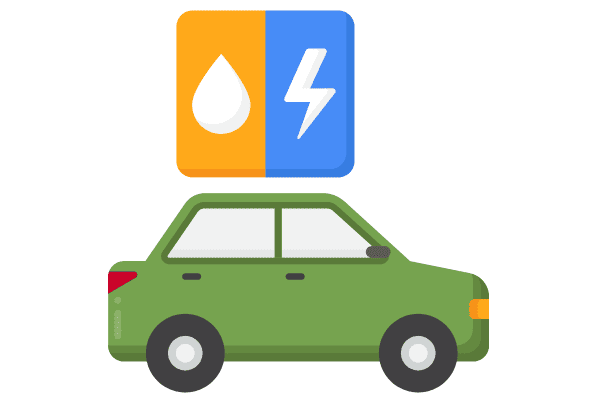
Public transportation is one of the most effective ways to curb emissions on a large scale. If public transit isn’t accessible or feasible isn’t:
- Carpool with colleagues or neighbors to reduce the number of vehicles on the road.
- Walk or bike for short distances instead of driving.
Conscious Consumerism
Conscious consumerism involves making informed decisions about what we buy based on how products impact our health, environment, and society over several decades. Here’s how you can practice Conscious consumerism:
- Purchase from businesses that prioritize sustainable practices.
- Limit consumption by buying only what’s necessary.
- Choose products that are minimal packaging to reduce waste.
Path Towards an Eco-Friendly Future Vision of a Clean Energy Future
Imagine a world where our energy system leaves a minimal environmental footprint. A world where the hum of wind turbines, the glint of solar panels, and the rush of hydroelectric dams signify progress. This isn’t a far-fetched dream. It’sisn’tachable reality if we It’sit to climate goals and make conscious efforts toward reducing emissions.
Technological advancements are paving the way for this transition. For instance:
- Solar cells with higher efficiency rates
- Wind turbines that can harness even low-speed winds
- Battery technologies enable the storage of renewable energy for later use
These innovations are game-changers, promising to reduce our reliance on fossil fuels and their associated toxic emissions.
Overcoming Challenges in Sustainability Transition
The path toward sustainability isn’t without obstacles. One main hurdle is the environmental damage caused by extracting materials for green technologies. Another is dealing with food waste from bioenergy production.
Here’s how we can tackle these Here’snges:
- Encourage recycling initiatives to minimize extraction-related environmental impact.
- Develop methods to convert food waste into energy.
- Advocate for policy changes promoting sustainable practices across industries.
Societal Shifts for an Eco-Friendly Future
An eco-friendly future requires more than just technological development; it needs societal shifts too.
We need to rethink our habits and choices:
- Turn off lights when not in use.
- Choose public transport or carpooling over individual cars.
- Opt for locally sourced, seasonal food over imported alternatives.
Moreover, businesses can play their part by adopting green key certifications and promoting sustainable practices among employees and customers.
Every step we take—no matter how small—counts towards lessening our environmental impact.
Climate Change Mitigation Pathways
Climate change mitigation pathways offer strategies to limit global warming while ensuring economic development:
| Pathway | Strategy |
|---|---|
| Pathway 1 | Focuses on lifestyle changes like reduced meat consumption & increased cycling/walking |
| Pathway 2 | Emphasizes technological innovation in energy & industry sectors |
| Pathway 3 | Merges both lifestyle changes & technological innovation |
Ultimately, transitioning towards an eco-friendly future is about balancing human development and Earth’s well-being—an alternative that respects nature while providing us with sustenance.
So let’s ask ourselves: What stepslet’sI take today to reduce my environmental footprint? How can I contribute positively to this critical transition? Because remember, every action counts!
Introduction: Making Our Energy System Earth-Friendly
An earth-friendly energy system minimizes negative impacts on our environment. This typically means using sustainable energy sources, reducing carbon emissions, and promoting efficiency. It’s a system where clean energIt’ske solar, wind, or geothermal replace fossil fuels such as coal and natural gas.
Critical Components of an Earth-Friendly Energy System
There are several essential elements in creating an earth-friendly energy system:
- Clean Energy Sources: These are resources that produce electricity or power without releasing harmful pollutants into the atmosphere. Examples include solar, wind, hydroelectric, and geothermal energy.
- Energy Efficiency: This involves using less energy to perform the same task – thus reducing total energy consumption.
- Energy Storage: Efficient storage systems allow us to harness excess power produced during peak times for use when production dips.
- Smart Grids: Smart grids use digital technology to control appliances at consumers’ homes to save energy, reduce ’ costs and increase reliability and transparency.
Steps Towards an Earth-Friendly Energy System
The path toward an earth-friendly energy system involves a series of steps:
- Shift from Fossil Fuels to Renewable Energy Sources: This is the most significant step in any plan for an earth-friendly energy transition. It means replacing coal-fired power plants with wind farms or solar panels.
- Increase Energy Efficiency: We can significantly reduce our electricity demand by making buildings more efficient and encouraging people to use less power.
- Invest in Research & Development (R&D): Continued investment in R&D will lead to new technologies that make renewable sources more efficient and cost-effective.
- Implement Policy Changes: Government policies must incentivize renewable energies while discouraging reliance on fossil fuels.
We’ll look at the challenges inWe’lld in this transformation process – from technological hurdles to economic considerations – and potential solutions to these issues.
So buckle up! We’re going on a journey through the ins and outs of transforming our current carbon-heavy fuel systems into cleaner alternatives better suited for Mother Earth’s needs. And who knows? BEarth’sstanding how our actions impact the world around us today, we can help shape a greener future tomorrow!
Lifestyle Changes for a Greener Planet
Daily Habits for Green Living
Our planet screams for help with climate change, greenhouse gases, and pollution. It’s high time we took some simple stIt’sto reduce our carbon footprint.
One of the easiest ways to start is by reducing water usage. You might think it’s a drop in the ocean, but every let’s bit helps. Fix that leaky faucet you’ve been ignoring, take shorter than you’ve so you, and only run loads of laundry or dishes.
Switching to energy-efficient appliances can also significantly affect your household’s CO2 emissions. Look out for household’s energy Star ratings when buying new appliances. They might cost more upfront but will save you money on energy bills in the long run.
Plant-Based Diet: A Step Towards Sustainability
Ever thought about trying organic food? Adopting a plant-based diet can do wonders not just for your health but also for our planet. Meat production contributes significantly to global warming due to its high greenhouse gas emissions.
You don’t have to go full vegan overnight – start by having one meat-free day per week and gradually increase from there.
Fast Fashion: The Hidden Polluter
Fast fashion might be easy on your wallet, but it’s hard on our planet. The clothes industry is notorious for its high carbon footprint and contribution to water pollution.
Next time you need new clothes, consider shopping second-hand or supporting brands prioritizing sustainability over profits. Remember, quality over quantity!
By making these lifestyle changes, we are taking steps towards an earth-friendly energy system and doing our part in preserving air quality for future generations.
The Digital Revolution: Reducing Paper Usage
Going full throttle on digitalization is like hitting two birds with one stone. Not only does it cut down on paper waste, but it also slows down deforestation. Consider the massive amount of paper used in traditional essay writing. Now, think about how many trees could be saved if we switched to typing our essays on computers or tablets instead.
Digital Tools vs. Paper-based Tools
Take a look at these examples:
- E-books have replaced physical books in many instances.
- Online calendars and planners have taken over from their paper counterparts.
- Digital note-taking apps are now preferred over traditional notebooks.
By going digital, we’re not just saving trees – we’re cluttering our lives, answering information more accessible and easier to manage.
Money & Productivity Benefits
And let’s not forget about the financial let’s. Going digital can save us a ton of money in the long run. Think of all the cash you’ve spent on paper goods like a book you’ve books, calendars, and cheat sheets. With digital alternatives available for free or at a low cost, it’s clear that digitizing can be knit your wallet and the planet.
Productivity-wise, digital tools often come with features that streamline tasks and boost efficiency. For instance, word processors have built-in grammar checks and allow for easy editing – no need for pesky erasures or correction fluids!
Electronic Waste: A Word of Caution
Of course, going digital isn’t without its pitfalls. The rise in isoelectronic waste is a growing concern as obsolete devices pile up in landfills worldwide. But don’t worry; there are ways to mitigate the issue:
- Proper disposal: Many cities offer e-waste collection programs.
- Recycling: Some manufacturers accept old devices for recycling.
- Reselling or donating: If your device still works fine, but you want an upgrade, consider selling it or giving it away instead of throwing it out.
In essence, transitioning from paper usage to digital tools offers numerous benefits – from environmental conservation to cost savings and productivity boosts – provided we’re mindful about managing electrons we’re site responsibly!
Advanced Energy Usage Technologies
We’ve journeyed through the vast landWe’ve of renewable energy sources, explored green technology’s pivotal role in our energy technology’s and witnessed the power of solar and wind. We’ve delved into the efficiency of hWe’veumps and observed how government policies can bolster or hinder renewable energy initiatives.
In our day-to-day lives, we’ve seen the impact of small but efficiant lifestyle changes towards sustainability. The path towards an eco-friendly future is not a distant dream but a tangible reality that we’re fast approaching. Digital recreation has shown us that reducing paper usage is one way to contribute to this cause.
So, what’s next? It’s time for you to be what’s this It’sge! Let’s make our energy system more EarLet’siendly by adopting advanced energy usage technologies.
By embracing these technologies, you’re contributing to you’re planet and saving on your energy bills. So why wait? Join the green revolution today!
FAQ – How to Make Energy Systems Earth-Friendly
What are some examples of advanced energy usage technologies?
Some examples include smart thermostats, home automation systems, and electric vehicles with regenerative braking capabilities.
How can I incorporate these technologies into my daily life?
Start small – consider replacing traditional light bulbs with LED ones or installing a programmable thermostat in your home.
Can making these changes save me money on my energy bills?
Absolutely! By using less electricity or gas, you’ll see a noticeable decrease in yyou’llility bills over time.
Is it expensive to switch over to these advanced technologies?
While some upfront costs may be higher than traditional options, many of these advanced technologies pay for themselves through long-term savings on your utility bills.
Are there any government incentives for adopting these technologies?
Yes! Many governments offer tax credits or rebates for individuals who invest in certain types of renewable energy systems or appliances.
In the journey towards an eco-friendly lifestyle, every person has a significant role to play. To make a big impact, we need to reassess our daily habits, from the type of product we use to the modes of travel we choose.
One small but crucial change we can make is to reduce our reliance on bottled water. The production of plastic bottles takes a lot of energy and generates a significant amount of waste. It’s also worth noting that these bottles often end up in the waste stream, causing harm to the environment. Opting for tap water instead can help conserve natural resources and reduce plastic waste.
Travel by car contributes a lot to air pollution and GHG emissions. In fact, the news often highlights the negative impact of vehicle emissions on our environment. Encouraging public transportation or carpooling can significantly reduce these emissions.
Traditional bulbs in our homes and other accommodations are another energy waste source. LED light bulbs, on the other hand, are much more energy-efficient. They use less energy and last longer than traditional bulbs, making them a better choice for new purchases.
Electronics, too, are a significant part of our lives. Computers, smartphones, and other electronic devices use substantial energy. Opting for energy-efficient models can help reduce this energy consumption.
Inefficient insulation in our homes can lead to heat loss, causing our heating systems to use more energy. Addressing gaps in the insulation can reduce this heat loss and save heating energy.
Cleaning products often contain toxic chemicals that can harm the environment. Eco-friendly cleaning products, however, are a safer choice and are often just as practical.
Proper waste management is another crucial aspect of an eco-friendly lifestyle. Recycling helps keep materials like plastic and electronics out of the waste stream.
Renewable energy sources like photovoltaic (PV) systems are increasingly popular. Installing such systems on the top of buildings can provide clean energy and reduce reliance on traditional energy sources.
Lastly, the power of visuals cannot be underestimated. Websites like Unsplash offer many powerful images depicting our choices’ impact on the environment. A photo can often convey what words cannot.
In wrapping things up, it’s clear that we can make a substantial dent in our ecological footprint simply by opting for more eco-friendly products and practices. It’s not just about the big things, like driving less or switching to renewable energy (although those are certainly important), but also about our smaller, everyday choices.
Take your computer, for instance. Many people don’t realize that computers can be big energy hogs, especially if they’re left on all day. You can significantly reduce your carbon dioxide emissions by simply turning off your computer when you’re not using it. But it’s not just about individual actions – we must make our systems more eco-friendly. Consider our schools, for instance.
Schools are a major source of energy consumption, with all the lights, computers, and heating and cooling systems they require. But there are many ways that schools can reduce their environmental impact. For example, they could switch to LED lights, which use less energy and last longer than traditional bulbs. They could also implement energy management systems to monitor and control their energy use.
It’s important to remember that being eco-friendly isn’t just about reducing our carbon dioxide emissions. It’s also about conserving resources and minimizing waste. That means thinking about the lifecycle of the products we use – from how they’re made to how they’re used to what happens to them when they’re no longer needed.
For example, many people don’t realize that much of our electronic waste is in landfills, which can leach toxic chemicals into the soil and water. By choosing products that are made from recycled materials or designed to be recyclable or compostable, we can help reduce this waste.
Ultimately, being more earth-friendly is a collective responsibility that we all share. It’s not just about what we do as individuals but also about how we work together as a society to preserve our planet, whether it’s through government policies or incentives.

